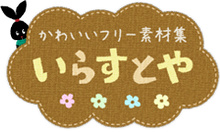~て くれる・~て くださる
Someone Does Something for Us
This structure expresses the ideas of someone doing something for us. That is, someone "gives us the doing" of something.
In this sense, the structure is very similar to the use of くれる that we learnt in Year 11.
Example:
Example:
Here are some examples that show ~て くれる・~て くださる in various situations and various tenses:
Often, the giver and/or receiver are left out of the sentence, especially if that part is obvious, and the important part is the receiving of the favour /OR/ the fact that you got someone else to do it for you.
Notes:
- Whereas in English, we use phrases like 'for me/for us' to show who the action was given to, in Japanese we use the verb structure ~て くれる・~て くださる to convey this idea.
- You can leave the receiver and/or the giver out of the sentence.
- Use ~て くださる instead of ~て くれる when you need to convey a sense of respect towards the giver of the action.
- One difference between ~て くれる and ~て もらう is the 'agency' of the giver. ~て もらう implies that the speaker somehow got someone to do something, whereas with ~て くれる, the giving could be spontaneous, not asked for.








